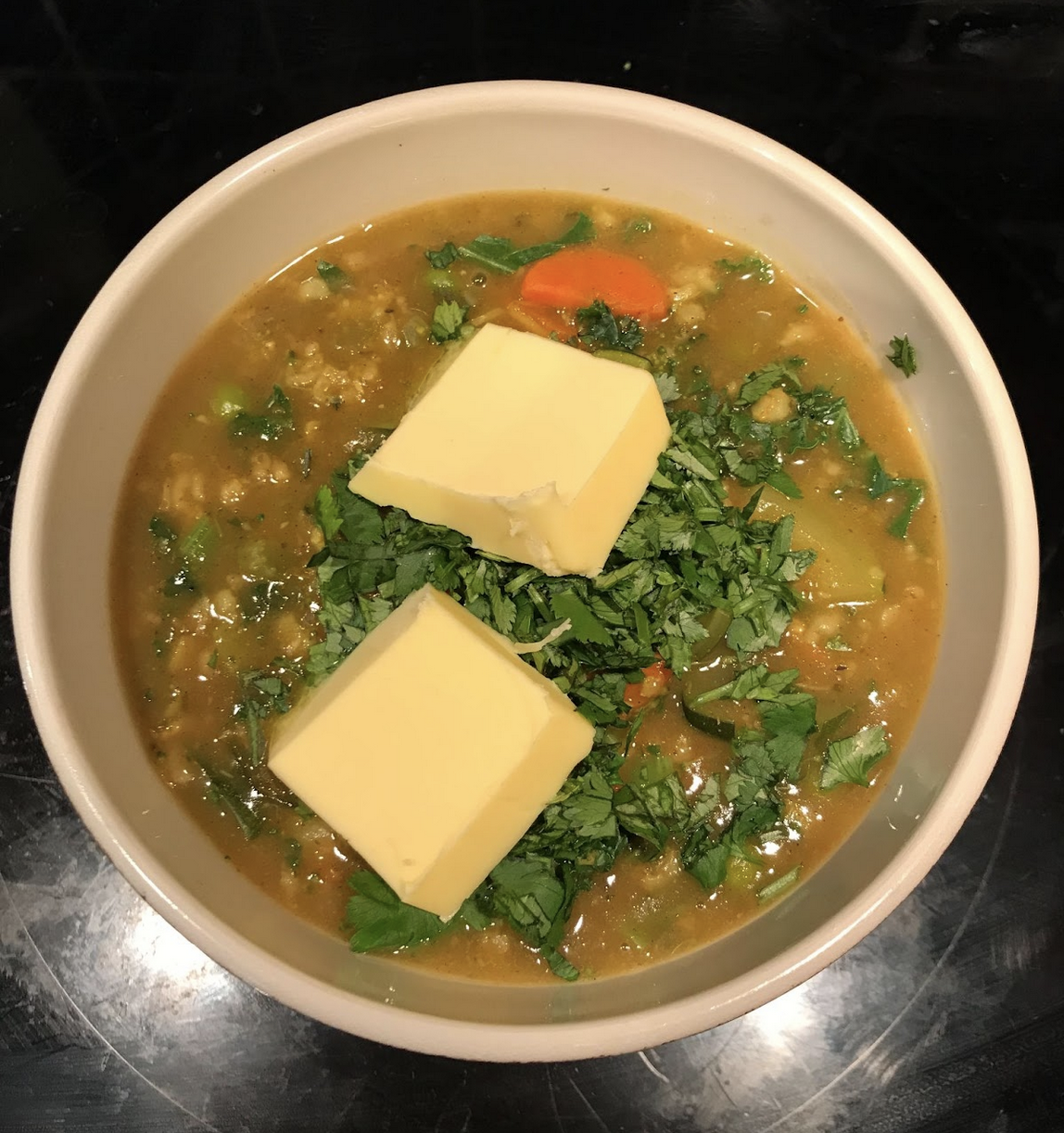
I love a good breakfast! There is great truth to the saying that breakfast is the most important meal of the day. In fact in Chinese medicine the high point of stomach function is 7 AM to 9 AM. This is when digestive strength is the strongest and we can derive maximum energy from our food. See my article Focus on Digestion.
It makes me sad that so many people, young and old, I know have abandoned breakfast as an important meal. The number one factor that drives food choice in our culture is convenience. It seems that the morning ritual of making and eating breakfast has been relegated to inconvenience. 30 minutes more of work and stimulation is now more important than our health. Coffee with toast, jam, donuts, pastries or cereal and milk– this combination spikes your blood sugar, disrupting it for the entire day, leading to more coffee and sugar to pick you up with each 2-hour crash.
Eating a warm, wet, non-sugary breakfast is the best way to support deep hydration and stabilize your blood sugar for the entire day. Water enmeshed with food particles is slowly absorbed at the rate of digestion and gets more thoroughly into your blood and tissues. Water on its own has a clearing effect, carrying out toxins and waste products but it is not very hydrating. Dry foods like crackers, toast, bread and cereal demand water from your system and are therefore dehydrating.
Saturated fat is equally important for hydration. It is the foundation of thick fluids in the body which are our hormones, cholesterol, and the fat membranes of our cells. See my article Focus on Cholesterol and Heart Disease. Grass-fed butter should be eaten liberally in porridge and with all meals. It is important to have the grain, some protein like meat, egg, or beans, fat, and a green vegetable for a complete breakfast.
This recipe is the result of my own experimentation to create a hydrating breakfast that I love. I encourage you to take my concept and make it yours. Rotate grains to take advantage of the taste and nutrient diversity they offer. Rice and millet (cooked as congee) can be cooked in larger quantities to speed the morning ritual. Oats and buckwheat both cook quickly and have a deep, rich flavor. Oats have a creamy, silky texture. Keep it simple, not too many ingredients each time and vary each day to minimize eating the same thing repeatedly.
Here is a good article about making congee:
https://www.andrewsterman.com/single-post/2015/04/08/Congee-and-Wet-Breakfasts-for-Health
So you know, 1 cup of long-grain white rice or millet makes 8 cups of congee! It is amazing how much water the fiber matrix in each grain can hold, how enormous they become. Grain cooked this way is time-released water!
Savory Hydrating Breakfast Porridge Recipe
Ingredients (estimated for one serving)
- 1/4 C. Rolled oats or buckwheat (1/3 C. for 2 people) or 1 cup millet or rice congee already cooked.
- 1 big palm full of frozen peas (about 1/4 cup)
- Salt to taste
- 1/3 of a medium carrot
- 1/2 stalk celery
- Any other vegetables you have for example: Turnip, zucchini, broccoli, cauliflower, parsnips, rutabaga, sweet potato, apple. Hard ones should be cut thin so they cook thoroughly. Adding leftover vegetables just at the end to warm them up works well too. I usually put carrots, celery and one other vegetable in and rotate them daily.
- Leafy greens like kale, swiss chard, collards, or spinach.
- Fresh parsley or cilantro
- Optional and excellent! Meat, chicken, scallops, fish, shrimp, or beans of different kinds
- Grass-fed butter, 2, 3, 4 Tablespoons
- Spices and herbs: Ginger, cumin, coriander, cardamom, turmeric, cinnamon, marjoram, thyme. The spices here are all warm digestion and enhance its function. Herbs help move food through your digestive tract.
Directions
- If you’re using congee,put the cooked congee, vegetables and salt into a pan and bring them to a boil. Reduce heat to medium and cook for three minutes, then let stand for 20 minutes (or simmer for an additional 3-4 minutes for time saving) for thorough cooking of the vegetables. When the vegetables are cooked, bring it to a boil again and add frozen peas or leftover vegetables just to warm them up.
- If you’re using oats or buckwheat, put them in a saucepan, add salt and cover with about an inch of water. Bring to a boil. Chop all of the hard vegetables and add them to the grain. Bring to a rolling boil, and stir in fresh ginger and any spices that you like. Turn off the burner, cover the pot and let stand for around 20 minutes to cook the veggies (or simmer for an additional 3-4 minutes for time saving.)
- Chop one large leafy-green leaf and stir it into the cooked mixture. Add water or broth if needed to the desired consistency and let simmer for 5-10 minutes to cook the greens.
- Pour into a bowl and garnish with minced parsley or cilantro and several large pieces of grass-fed butter. 2-4 tablespoons is a good range.
Note: The final thickness is determined by the amount of water remaining, so star with less and add more if needed to give the consistency you want. I usually add beef or chicken broth after the initial cooking to adjust thickness and enhance the flavor. I like the porridge to pour out of the pan into the bowl at the end, not so thick as to require much encouragement with scraping.
This dish may be cooked the evening before and re-warmed for breakfast.
For more instruction, watch my video How to Cook Congee.

Comments are closed.